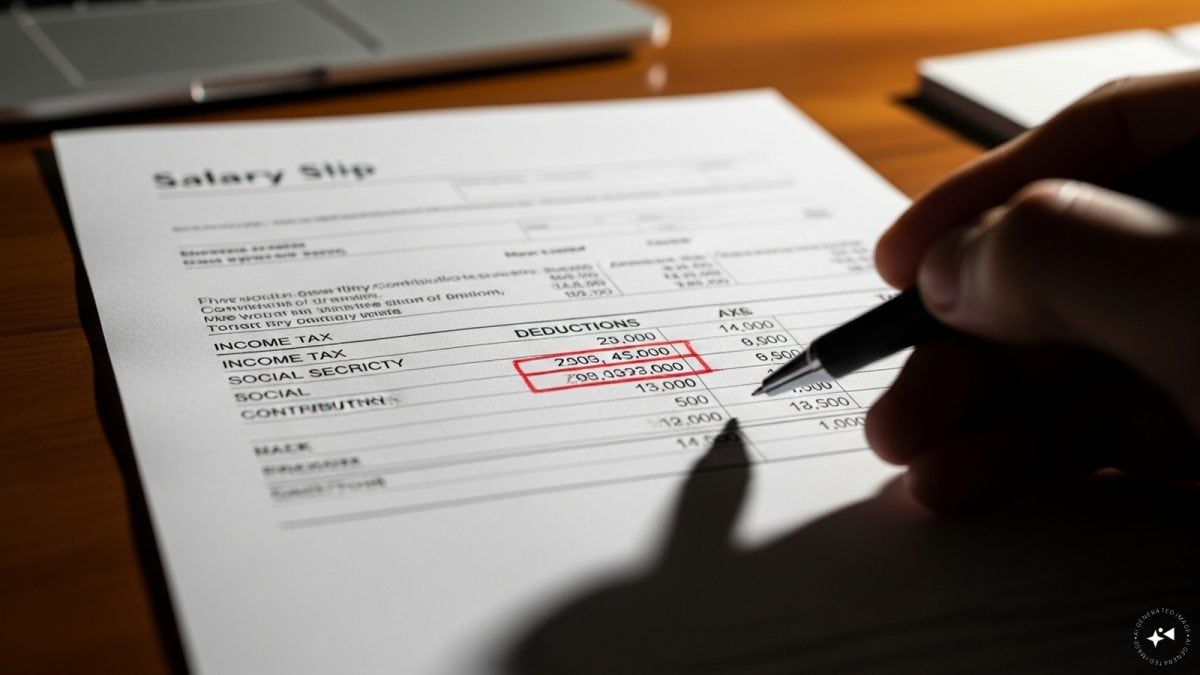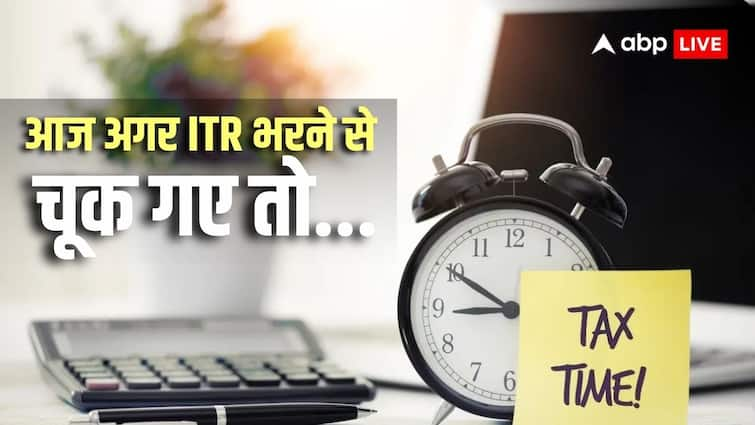- November 15, 2025
Reading Your Salary Slip Wrong? Here Are 5 Tax Facts You’re Missing

Last Updated:
Expert explains that salary slips hide key tax details like non-exempt allowances, differences in taxable income, unlisted deductions, TDS limits, and tax regime choices.

Salary Slip Myths: 5 Tax Details That Can Change Your Take-Home Pay
On the one hand, a salary slip might look like a simple document detailing a person’s take home income, allowances, and provident fund inputs, thought it hides some important information that have tax implications while filing income tax returns.
Knowing your salary slip’s hidden information is critical to avoid paying additional taxes or missing out liabilities. Some of the ignored facts n the salary slip – many allowances aren’t fully tax-free, your take-home doesn’t reflect your true taxable income, and even TDS isn’t your final tax – are important to know.
What Your Salary Slip Contains
1. Earnings (Your Income Part)
These are the components that make up your gross salary.
-
Basic Salary – Fixed part of your salary
-
HRA (House Rent Allowance)
-
DA (Dearness Allowance) – mostly for govt/PSU jobs
-
LTA (Leave Travel Allowance)
-
Special Allowance
-
Conveyance/Transport Allowance
-
Bonus/Performance Pay (if applicable)
2. Deductions (Amounts Cut From Your Salary)
These are the amounts subtracted from your earnings.
-
EPF (Employee Provident Fund) contribution
-
Professional Tax (only in some states)
-
TDS (Tax Deducted at Source)
-
ESI contribution (if salary is within limit)
-
Any company-specific deductions (loans, canteen, etc.)
As explained by Gaurav Jain, Partner, Direct Tax at Forvis Mazars India to News18, here are five hidden tax details your salary slip simply doesn’t show — but can make a big difference to your money.
Here are five important things your salary slip isn’t telling you about taxes:
1. Not All Allowances Are Tax-Free
Your salary slip may display components such as HRA, LTA, special allowance, or conveyance allowance, but it doesn’t reveal how much of these are truly exempt from tax. For instance, House Rent Allowance (HRA) qualifies for exemption under Section 10(13A) only if you actually pay rent and meet the prescribed conditions. Likewise, Leave Travel Allowance (LTA) is exempt only for genuine travel within India, limited to two journeys in a block of four years. In the absence of proper documentation, these allowances —though itemized on your payslip — can become fully taxable.
2. Your “Take-Home Pay” Isn’t the Same as Your Taxable Income
Many employees assume their “take home pay” is the same as their taxable income, but that’s not the case. Your take-home pay only reflects the net salary after deductions, while your taxable income includes several elements not clearly reflected in your salary slip—such as the employer’s contribution to provident fund exceeding ₹7.5 lakh per year, perquisites like rent-free accommodation or company-provided car, free meals and bonuses accrued but not yet received. These additional components often lead to differences between the figures shown on your payslip and those appearing in your Form 16 or Income Tax Return (ITR). It is possible that your taxable income may be higher even though your take-home pay is lower.
3. Tax Deductions Under Section 80C and Beyond Don’t Reflect on Your Slip
Your salary slip usually reflects statutory deductions such as EPF, TDS, or professional tax, but it doesn’t indicate the tax-saving investments or deductions you can claim. Investments in PPF, ELSS, or life insurance, payments like tuition fees, and deductions for health insurance (Section 80D), home loan interest (Section 24), or donations (Section 80G) all help reduce your taxable income. However, if may not necessarily appear on your payslip if the relevant information is not timely provided by the employee to employer.
4. TDS is Not Final Tax
The TDS deducted from your salary is just a provisional tax, not the final liability. Your actual tax payable or refund is determined after considering all income sources, deductions, and exemptions while filing your Income Tax Return. It may differ—being either higher or lower—and may also resulting the refunds.
5. Changing Regimes Can Change Your Tax Picture
Your salary slip doesn’t indicate whether you’re being taxed under the old regime—which allows exemptions and deductions—or the new regime, which offers lower tax rates but minimal exemptions. This choice, made at the beginning of the financial year, can have a major impact on both your take-home salary and overall tax liability. Many employees skip comparing the two options and end up paying more tax than necessary. It’s important to evaluate both regimes carefully before submitting your investment declaration to HR or filing your income tax return.
Your salary slip is just the surface—it tells you what you earn and what’s deducted, but not why or how those figures impact your taxes. By understanding these hidden aspects, you can optimise your salary structure, maximise tax efficiency, and avoid last-minute stress during tax filing season.
Take a closer look at your next salary slip—it might be saying less than you think, but it hides insights worth thousands.

Varun Yadav is a Sub Editor at News18 Business Digital. He writes articles on markets, personal finance, technology, and more. He completed his post-graduation diploma in English Journalism from the Indian Inst…Read More
Varun Yadav is a Sub Editor at News18 Business Digital. He writes articles on markets, personal finance, technology, and more. He completed his post-graduation diploma in English Journalism from the Indian Inst… Read More
November 15, 2025, 09:15 IST
Read More







